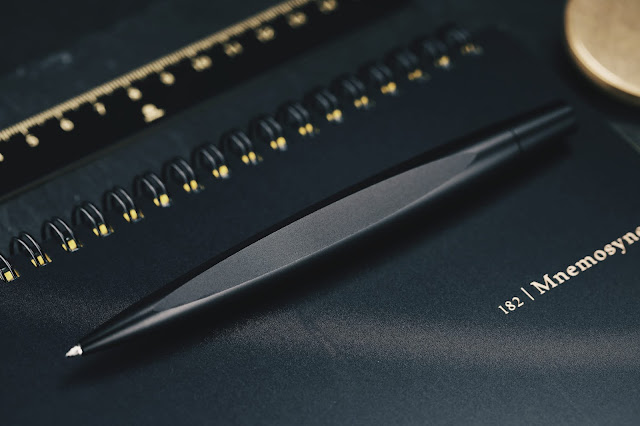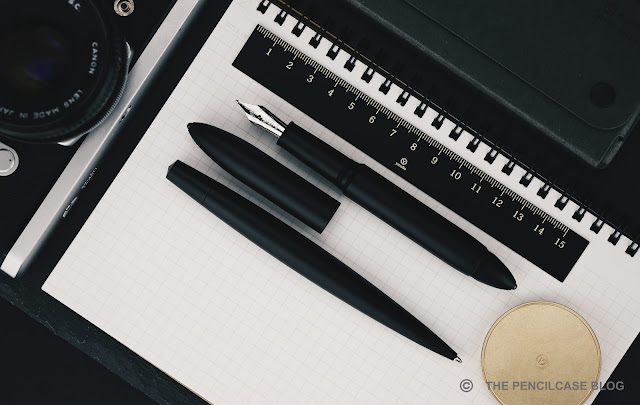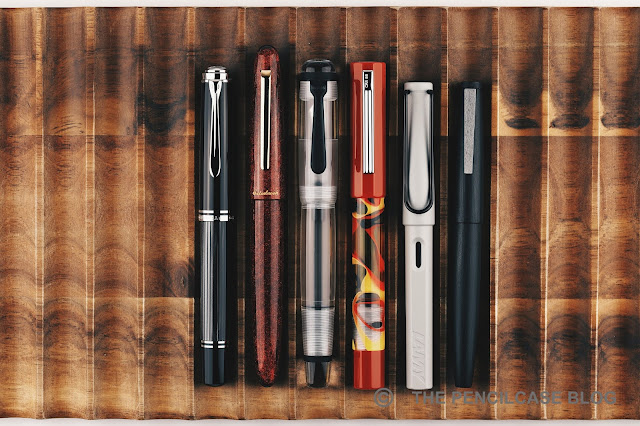
Courtesy of Appelboom, a TWSBI Diamond 580 Smoke Rose Gold II (or RG II in short) landed on my desk. I
have to admit, it's been a hot minute since I last reviewed a TWSBI... heck,
it's been a hot minute since I last held a TWSBI in my hand! Not that I don't have a couple TWSBI's laying around, but for some reason, none of them have been in rotation
in the past year or so. Maybe being spoiled for choice as a pen blogger is
the main 'hindrance' (hey, you won't hear me complain!) that prevents me
from picking up the sleek 580Al (review HERE), uber-functional and fun Eco (review HERE), or even the hugely underrated GO (that I probably should review at some
point).

In my defense, TWSBI hasn't exactly been churning out new and innovative
products in recent years. Their
last pen to really impress me was the Go, but that too was already quite a
while ago. So perhaps I was just getting a bit bored. TWSBI's current strategy seems to involve exploring
different, sometimes more luxurious, materials and trendy finishes for the
existing models in their catalog, and you can hardly argue with the
effectiveness of said strategy - every new special edition Eco colorway
seems to sell like hotcakes (I too, have to admit being quite tempted
by the new Cement Grey Eco)!

So, as I was saying, TWSBI occasionally takes one of their established models and puts them in a more luxurious, shinier outfit. Seemingly in an effort to bump them up into a
slightly more premium category. Yes, the Smoke Rose Gold II is the most
expensive version of the Diamond 580 to date, but not so much so that it takes away from the value proposition we've come to expect from the
Taiwanese brand.

 |
| If you can't see the ink sloshing around in the barrel, is it really a TWSBI? |
The name of the TWSBI Diamond 580 Smoke Rose Gold II is about as self-explanatory as it is long: You get the demonstrator 580 you're probably familiar with by now, but with the inclusion of a smokey, translucent grey
cap, section, and piston knob that contrasts against the transparent faceted barrel. Ultimately the color of the ink dictates the look of the pen, put a darker ink in it, and the result is an overall darker,
sleek-looking pen,

The darker resin is offset by a bit of bling that is the rose gold trim. Interestingly, the Smoke Rose Gold inherits the
580Al's aluminum piston mechanism - also rose-gold plated for the occasion - but not the 580Al's metal section. I guess too much rose gold would be too much. The plated aluminum of the piston has a slightly different color than the other rose gold plated trim, but it's not too distracting from the overall picture. Everything combined, this is a pretty stylish - and photogenic! - pen. I'm not
gonna lie, that's not something I ever expected to say about a
TWSBI!

 |
| L to R: Platinum #3776 Century, TWSBI Diamond Mini, TWSBI Eco, TWSBI Diamond 580 RG II, Lamy Safari, Lamy 2000 |
Picking up the 580 to write instantly feels familiar again. The slight resistance in the first turn of the cap due to the rubber o-ring that seals it airtight, the subtle texture of the faceted barrel, and a reassuring bit of weight you might not immediately expect from a 'plastic' pen... Ah yes, this feels familiar!
Over the years of me ignoring the Diamond 580, I almost forgot that this is a really comfortable pen to use! It's actually a fairly large pen, at 14.3 cm/ 5.63" capped, and 13 cm/ 5.12" uncapped. The grip is relatively short but has a decent diameter and comfy profile. The transition from section to barrel is only interrupted by a set of threads that are barely noticeable in the hand. Making it a comfortable pen to hold, even if you grip slightly higher up like I do. I find the 580 to be more than long enough to use unposted - Luckily because while the cap can post, it sits quite far back on the barrel and throws off the balance of the pen.

Maybe the one thing, above everything else, that makes me wonder why I don't use my TWSBI's more often is the nib! All the way from the most inexpensive TWSBI Go, to this most decked-out model, I've never come across one that didn't write flawlessly out of the box. In particular, I have a soft spot for TWSBI's 1.1mm stub nibs (it's a shame they never brought back the excellent 1.5mm stub!). The 1.1mm stub on this 580 RG II - rose gold plated to match the rest of the pen - is no different. It's a consistent and smooth writer that provides a very precise and crisp line variation. The heavier ink flow of the stub nib pairs perfectly with the 580's large ink capacity.

It's impressive to realize that in all those years, the 50$ standard version of the TWSBI Diamond 580 is still... 50$! It never went up in price (at least not as far as I know). If standard versions aren't your cup of tea, the 85$ Smoke Rose Gold II is an easy upgrade to recommend. It's still a lot of pen for relatively little money, and the rose gold trim successfully adds some flair to the utilitarian-looking Diamond 580.
As usual, pricing isn't quite consistent depending on where you are in the world. Pricing from EU-based retailers like Appelboom is unfortunately quite a bit higher across the board, with the RG II retailing for 109€ (105$ without VAT) - that's quite a mark-up! Regardless, in the current market where steel-nibbed pens regularly fetch 300$ or more, even the most expensive TWSBI is still an excellent bargain if you ask me. Now excuse me while I go fill up one of my own TWSBI's again!
Note: This product was sent on loan by our site sponsor Appelboom, so I could write this review. I was in no way influenced in the making of this review, the opinions shared in this review are completely my own! This post does not contain affiliate links.










































